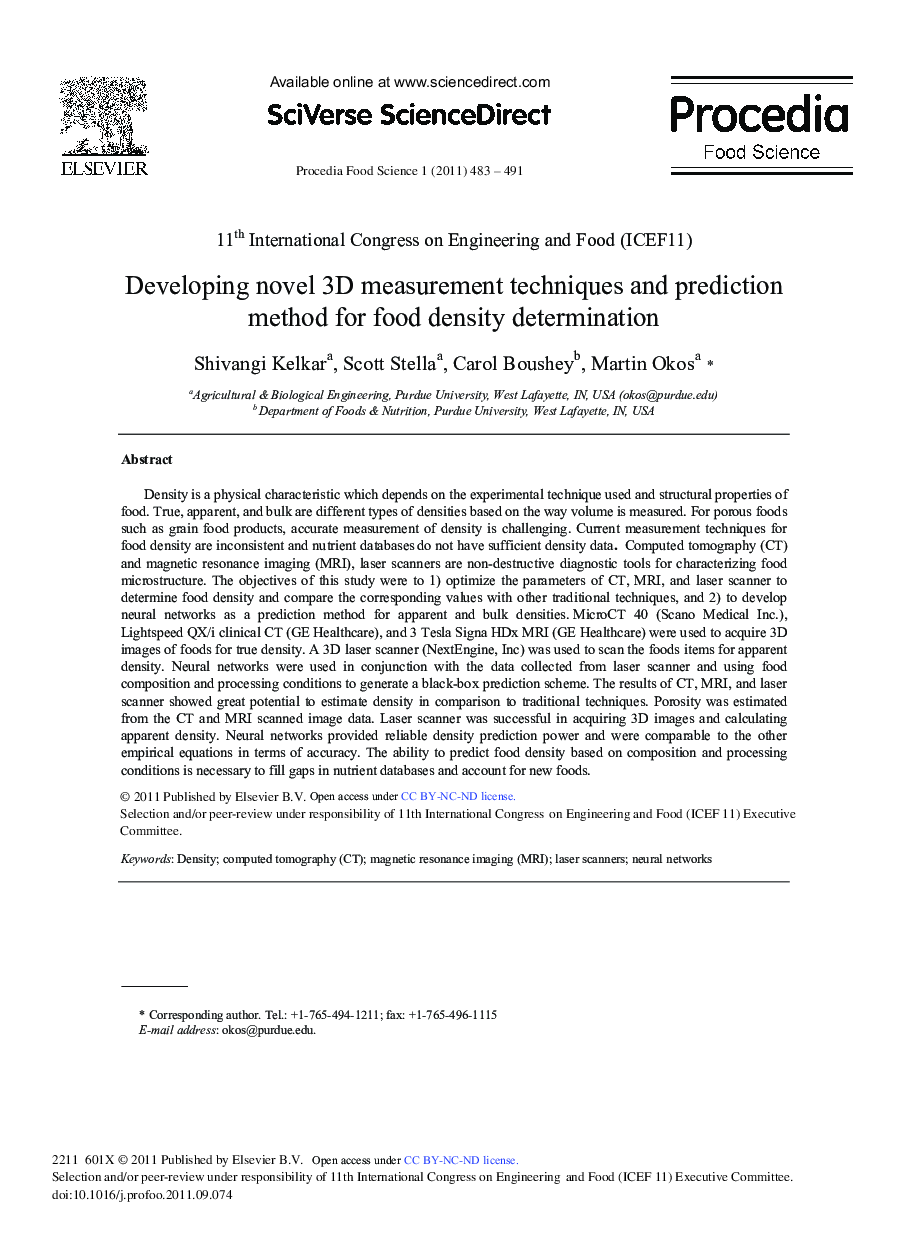| کد مقاله | کد نشریه | سال انتشار | مقاله انگلیسی | نسخه تمام متن |
|---|---|---|---|---|
| 1264982 | 1496855 | 2011 | 9 صفحه PDF | دانلود رایگان |

Density is a physical characteristic which depends on the experimental technique used and structural properties of food. True, apparent, and bulk are different types of densities based on the way volume is measured. For porous foods such as grain food products, accurate measurement of density is challenging. Current measurement techniques for food density are inconsistent and nutrient databases do not have sufficient density data. Computed tomography (CT) and magnetic resonance imaging (MRI), laser scanners are non-destructive diagnostic tools for characterizing food microstructure. The objectives of this study were to 1) optimize the parameters of CT, MRI, and laser scanner to determine food density and compare the corresponding values with other traditional techniques, and 2) to develop neural networks as a prediction method for apparent and bulk densities. MicroCT 40 (Scano Medical Inc.), Lightspeed QX/i clinical CT (GE Healthcare), and 3 Tesla Signa HDx MRI (GE Healthcare) were used to acquire 3D images of foods for true density. A 3D laser scanner (NextEngine, Inc) was used to scan the foods items for apparent density. Neural networks were used in conjunction with the data collected from laser scanner and using food composition and processing conditions to generate a black-box prediction scheme. The results of CT, MRI, and laser scanner showed great potential to estimate density in comparison to traditional techniques. Porosity was estimated from the CT and MRI scanned image data. Laser scanner was successful in acquiring 3D images and calculating apparent density. Neural networks provided reliable density prediction power and were comparable to the other empirical equations in terms of accuracy. The ability to predict food density based on composition and processing conditions is necessary to fill gaps in nutrient databases and account for new foods.
Journal: Procedia Food Science - Volume 1, 2011, Pages 483-491